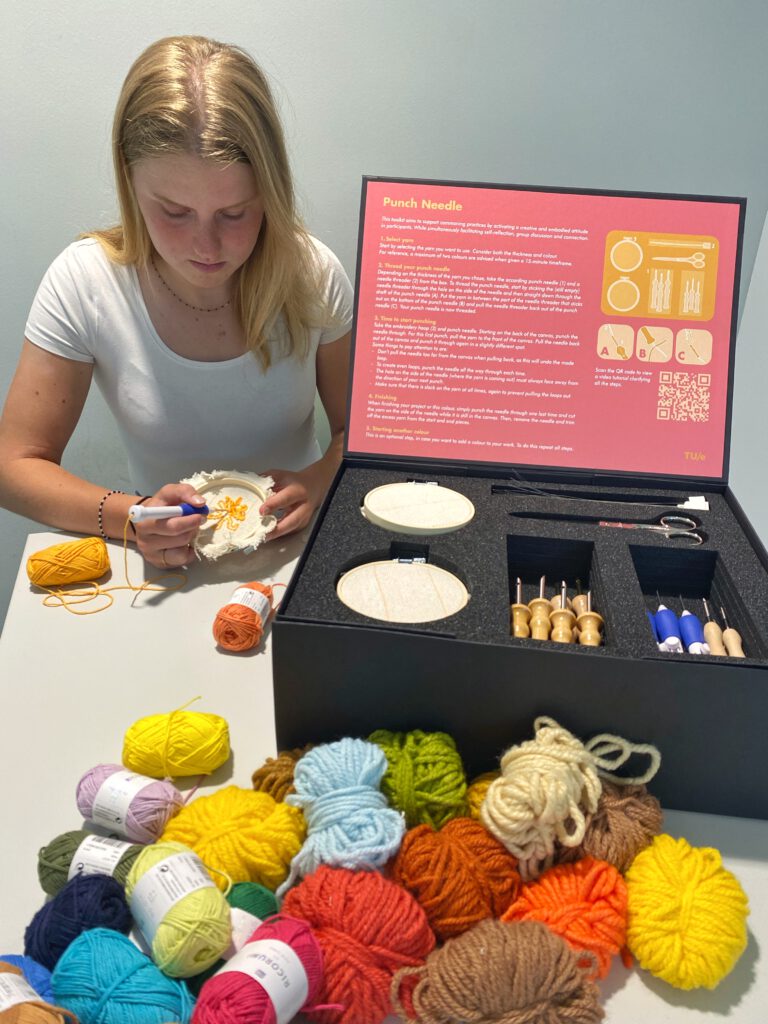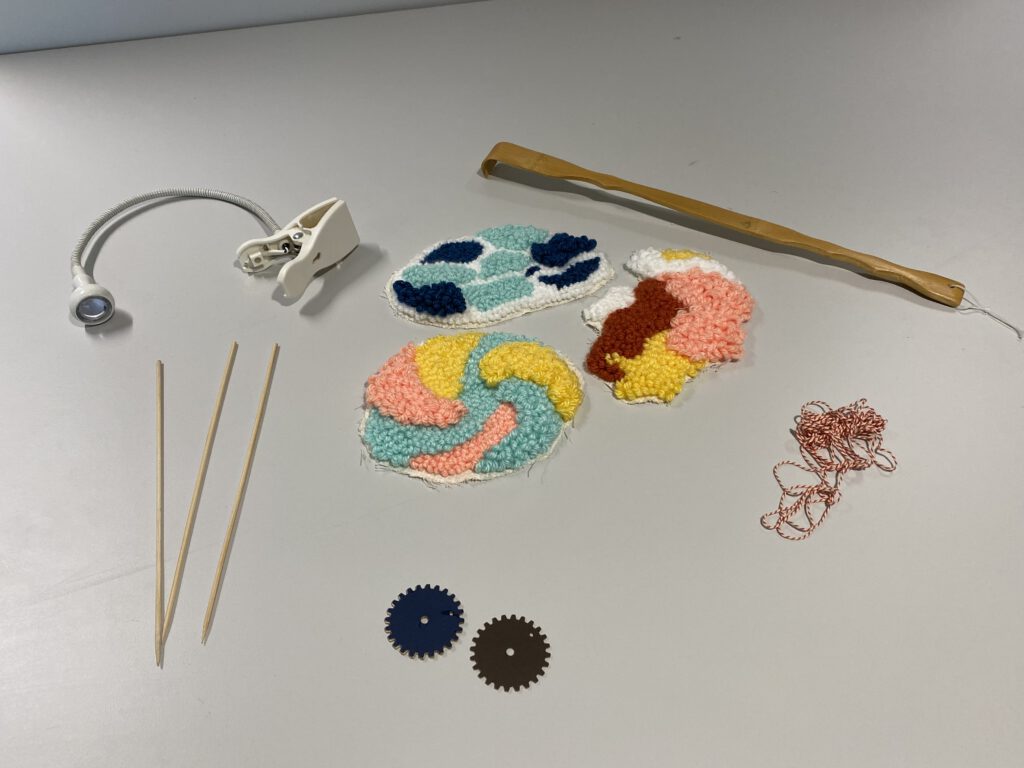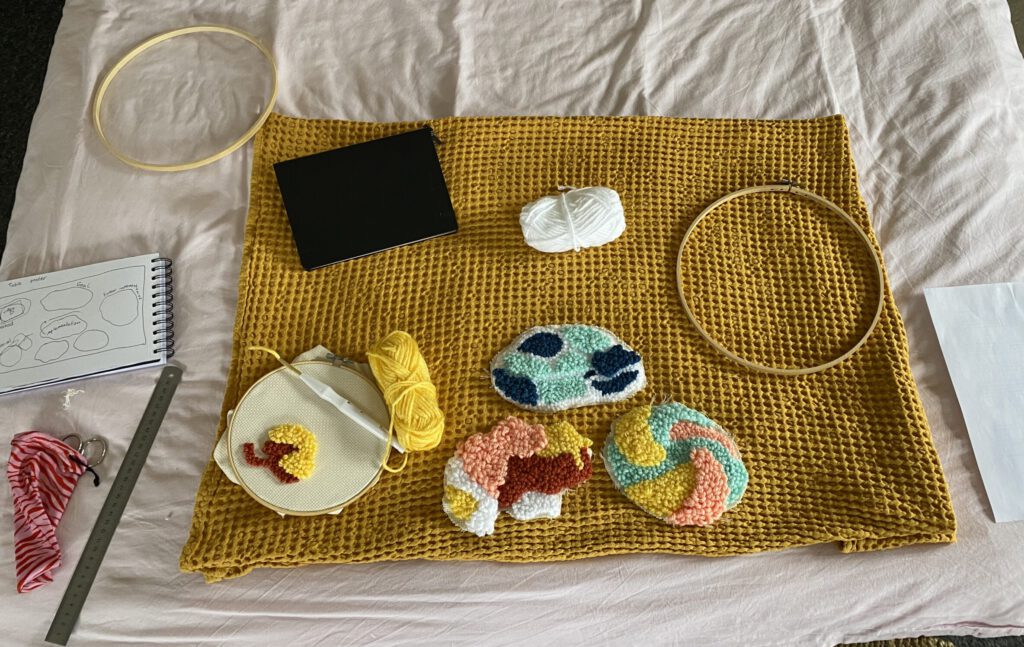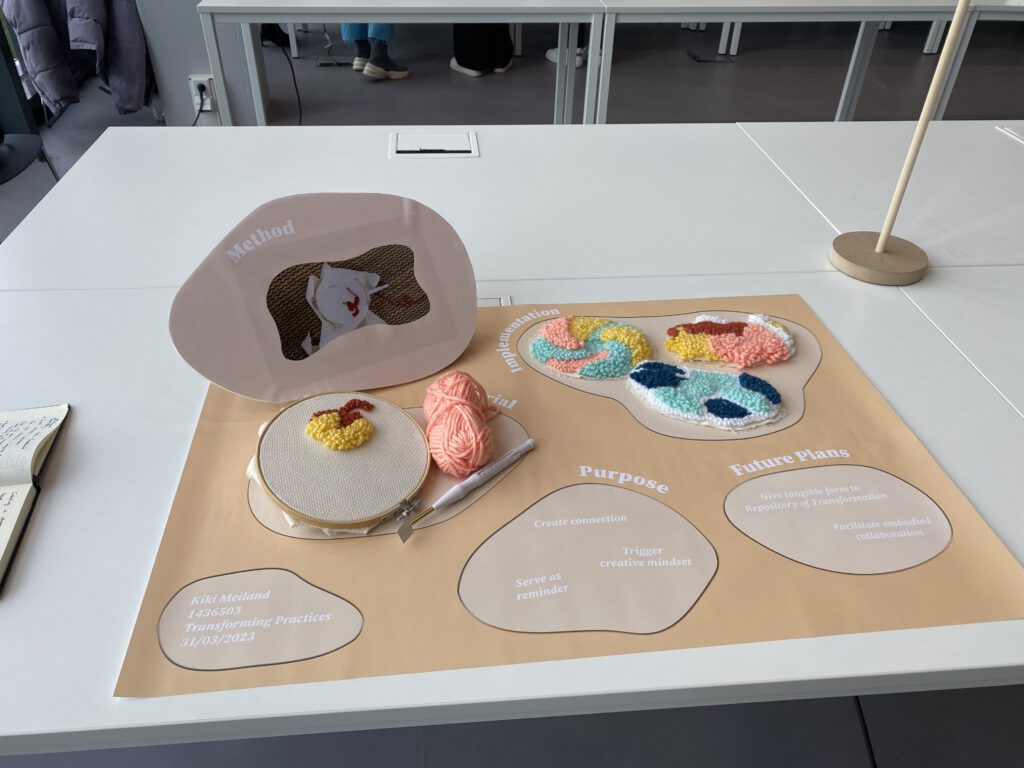Final Bachelor Project
Commoning through Punch Needling
Throughout my Final Bachelor Project, I took a to me relatively unknown approach. Designing specifically from and for a theory. This theory, commoning, in combination with the minor key focuses strongly on open-endedness, unpredictability, exploring to keep exploring, creativity and transdisciplinary collaboration in which the experience of all who are involved gets valued equally.
I was able to change perspectives to empathise with the participants of the consortium that I was designing for. I involved the user throughout the process by conducting various user tests and collecting qualitative data to evaluate and validate my design choices. However, I recognize a missed opportunity in the collecting of feedback and reflections of the consortium’s participants on the workshop. I realise this would have been a very valuable addition to better validate and (re)iterate the design. In future projects, I will better prepare for this qualitative data collection and more actively approach people to gain these insights.
I gained insight into and managed to design for a transdisciplinary multi-stakeholder consortium. Creating value for them, by providing them with resources to activate their creativity, bring them into an embodied atmosphere and help them reflect on themselves while connecting with others. On the other hand, I wasn’t afraid to take them out of their comfort zone for the sake of the bigger goal. Ultimately aiming to help them reach their goal of performing commoning practices.



I developed and realised the toolkit, together with all its components by utilizing my skills in graphic design, and video making and gaining the necessary skills and knowledge to implement laser cutting. Also, related to Technology and Realisation, I proposed the opportunity of implementing the Repository of Transformation (Hartogs, 2023) a digital repository supported by artificial intelligence, showing my awareness of technologies like artificial intelligence and my ability to connect these to my designs creatively.
In terms of professional skills, I believe to have presented in a structured and professional manner while conveying my passion and enthusiasm. Moreover, I believe to have developed my ability to adjust my presentation style and level of communication to different audiences.
Performing the project individually taught me a lot about performing design research processes. Where I would have tried to desperately hold on to a design model like the double diamond, the project and theory taught me to embrace not knowing and have a more intuitive and explorative process.
The tutorial, attached to the toolkit via the QR-code, explaining the technique

As a result of the project being individual, I feel that I was able to better implement and explore my professional identity and vision.
I was able to utilize and further refine my embodied approach and thinking-through-doing attitude within the project. For instance when creating the poster for the midterm presentation and the layout of the toolkit, by physically laying out all the materials I wanted to implement.
During the squad carrousel, during which we were able to test and develop our concepts with other squad members, a setback happened. When the group did not respond and engage with the items I brought the way I had hoped them to. However, I was almost immediately able to recognize what I could improve on in a future session. By not being afraid to take people out of there confort zone, redirecting the situation when necesary, giving appropriate guidance and asking the right questions to activate participants,
In terms of my vision, I found that my interests and the impact I aim to make with design can be achieved through different mediums. Where I first aimed to create an impact on a more personal level through provoking thought and change in behaviour I now realize designing to enable corporations or policymakers to develop better practices could have a far bigger impact.


